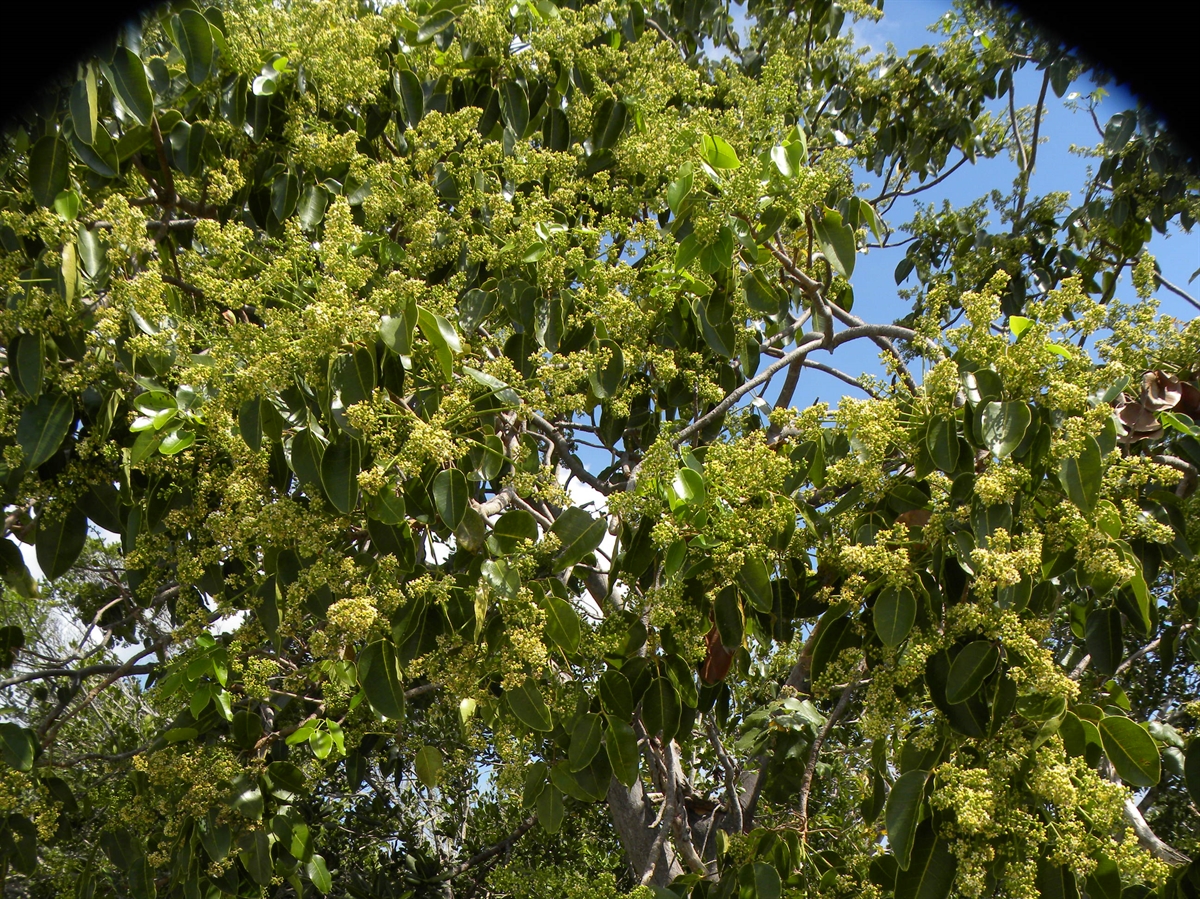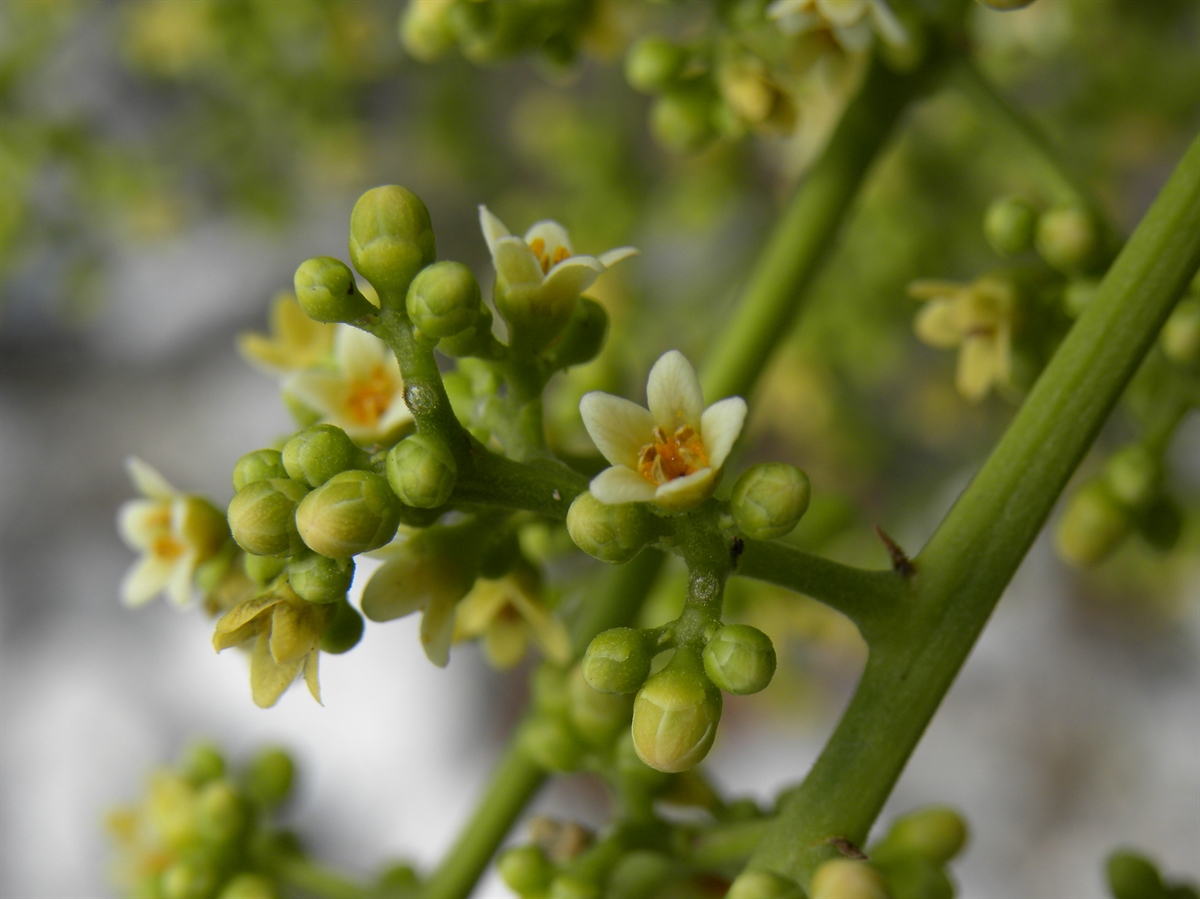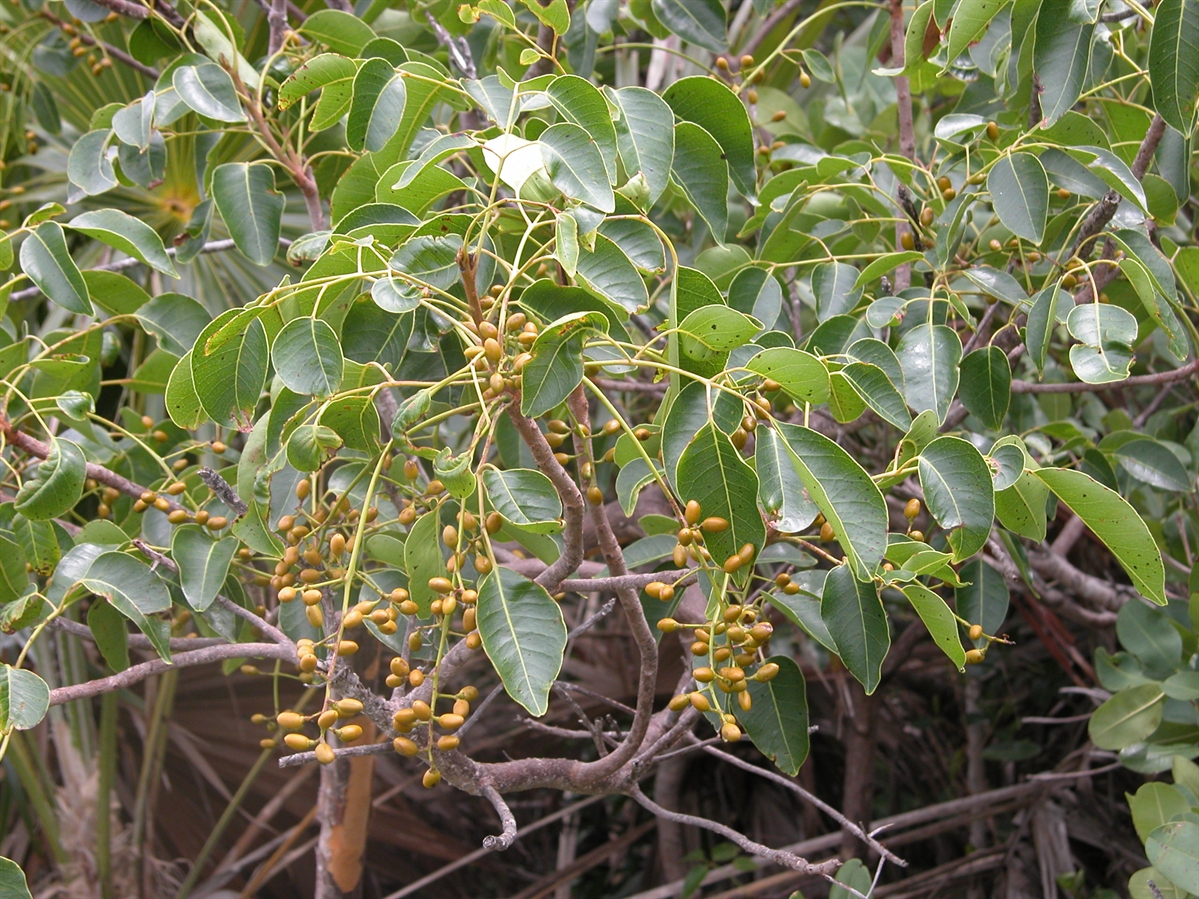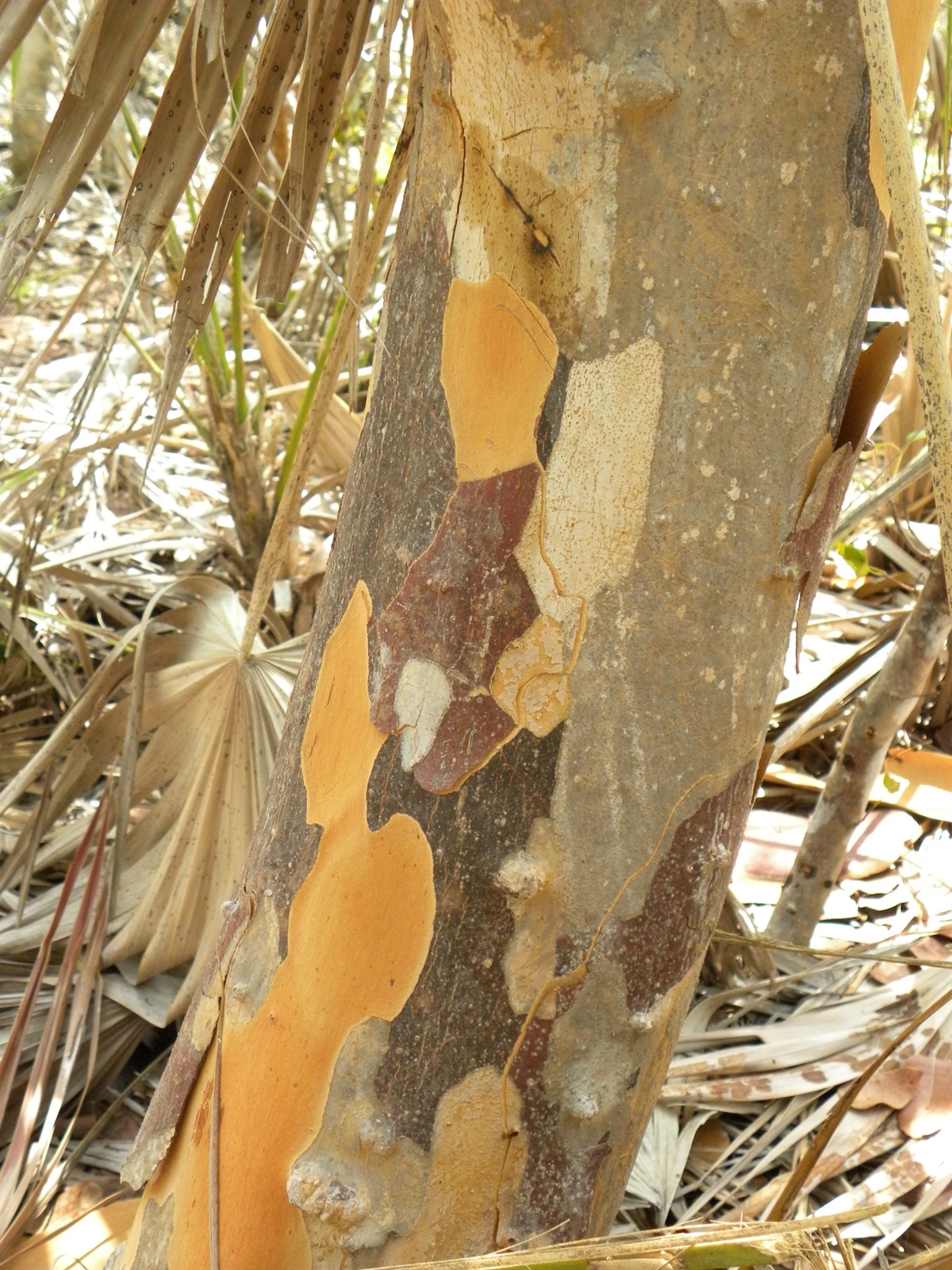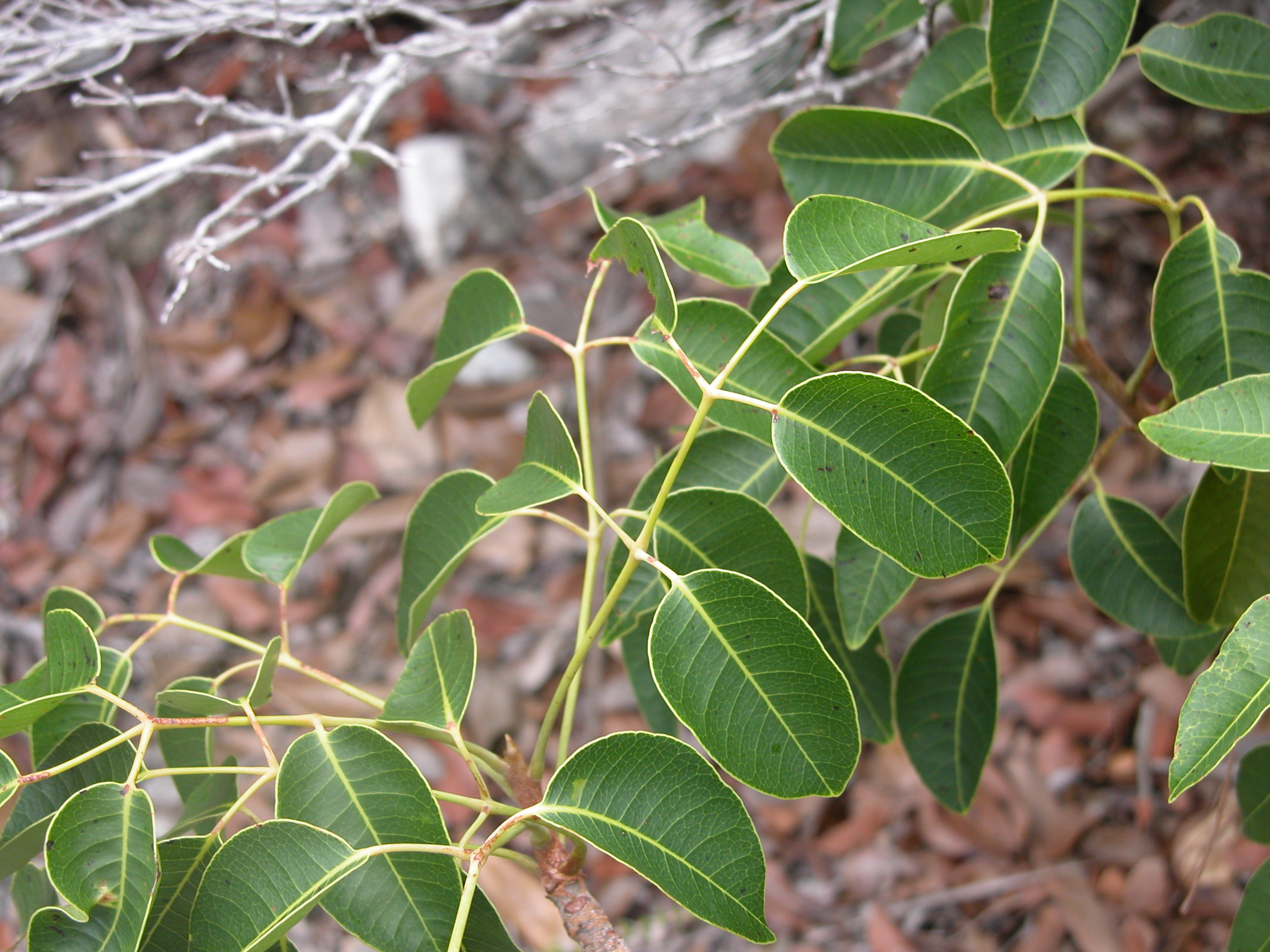Habit: Metopium toxiferum grows as a low shrub to large tree up to 15 meters in height and 40 cm wide. The bark is orange and brown and comes off in plates. The trunk and branches produce a black sap. The leaves are arranged alternately and luster at branch tips. The leaves are oddly pinnately compound producing 5-7 leaflets. The leaflets are ovate and up to 10 cm long. As the leaves age they develop black spots on them.
Metopium toxiferum is dioecious. The incomplete, imperfect, actinomorphic flowers are arranged in panicles. There are 5 unfused sepals in the calyx and five unfused greenish white petals in the corolla. In male flowers there are 5 functional unfused stamens. In female flowers the ovary is superior, produces a drupe that turns orange-yellow at maturity and is 1 cm in size.
Habitat: Metopium toxiferum grows in Dry Broadleaf Evergreen Formations – Forests/Shrublands/Woodlands/Dwarf Shrublands (coppice): primarily in shrublands as well as in Pine Woodlands. In Pine Woodlands Metopium toxiferum can be the dominant understory shrub.
Distribution: Metopium toxiferum occurs on all islands in the Lucayan archipelago as well as Florida and the Greater Antilles.
Medicinal/Cultural/Economic usage: Metopium toxiferum is well known for causing medical problems rather than solving it. The oils from Metopium toxiferum cause dermatitis ranging in severity from a red rash to intense blistering of the skin. A mixture of tea Metopium toxiferum leaves and twigs combined with bleach has been used to induce abortions but also has the tendency to kill the patient.
The fruits are an important part of the diet of many birds.
